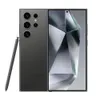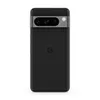What's next for smartphone displays — tandem OLED, microLED and more
Phone makers look to screens to make their phones stand out

There's a battle taking place on your smartphone. And it's happening right up front on the display, as phone makers are looking for ways to make the screens on their latest devices stand out from the competition.
Any new phone release comes with it a laundry list of improvements over previous models — and, not coincidentally, an implicit invitation to compare the new device's specs to the competition. Displays used to be an afterthought, something phone makers would tout after they talked up chipsets and cameras. These days, though, a display's brightness and refresh rate usually is among the first things a phone maker wants to talk about.
The growing importance of displays makes sense. "Smartphones are a mature product category, so manufacturers need to find differentiation where they can -- usually with camera, silicon, and display improvements," said Avi Greengart, lead analyst with research firm Techsponential. "A smartphone is basically a sheet of glass, so the more you can make that glass stand out, the better."
Screen specs that matter
Ross Young, CEO of Display Supply Chain Consultants, agrees that the front-and-center nature of a phone's display makes it a prime candidate to be the focus of any handset update. But there are other factors at play to explain the rise to prominence for smartphone screens.
"A smartphone is basically a sheet of glass, so the more you can make that glass stand out, the better."
— Avi Greengart, Techsponential
"In the case of OLEDs, there are also a growing number of advanced technologies to enhance performance such as LTPO, CoE, MLA, curved, foldable, tandem, etcetera, that can boost performance," Young said.
That alphabet soup of technologies has led to a number of display improvements in recent years. LTPO, or low-temperature Polycrystalline oxide, is a technology that's helped phone makers balance while display refresh rates with power management features, while a micro lens array (MLA) has led to brighter panels. CoE, or color filter on encapsulation, has helped with the development of thinner, more flexible displays, which has been particularly helpful in the growth of the foldable phone market.
Essentially, many of the technologies Young lists are the reasons why we're seeing more funs with faster refresh rates and increased peak brightness. And that's leading to boosts in display specs on recent phones.
Get instant access to breaking news, the hottest reviews, great deals and helpful tips.
This year in smartphone displays

Consider this calendar year alone, when we've already seen the Galaxy S24 flagships from Samsung boost their brightness over previous models. All three new Samsung phones, from the standard S24 to the high-end Galaxy S24 Ultra promise a maximum brightness of 2,600 nits. For the Galaxy S23 family, brightness maxed out at 1,750 nits.
If that sounds like a big leap forward, consider the OnePlus 12, which looks to take on Samsung's flagships for the title of best Android phone. That phone claimed a peak brightness of 4,500 nits, and while that's a difficult level of brightness to achieve outside of some very specific conditions, it's clear that the battle to produce brighter smartphone screens is on.
We're focusing on flagships here, but even midrange models are boasting more impressive display specs. Google's just-released Pixel 8a boosts the refresh rate of its panel to 120Hz, after the Pixel 7a offered a 90Hz screen. Google's midrange also now offers the same brightness of 2,000 nits that you'll find on the Pixel 8 flagship.
That won't be it for display improvements on smartphones this year. Apple will likely release its iPhone 16 lineup in the fall, and rumors are already tipping the screens to be brighter with thinner bezels; in the case of the iPhone 16 Pro models, the sizes of the screens may even increase.
It probably won't happen with this fall's iPhone release, but at least one report tips Apple to one day use microLED panels on its phones. The switch would mean better brightness, greater power efficiency and improved image contrast.
"Today's premium smartphones are getting brighter displays that sip less power," Greengart said. "I expect we will see more tandem OLED configurations like Honor's limited edition Magic 6 Ultimate, and Apple's new iPad Pro."
In other words, there's other display improvements still left to adopt. Don't expect device makers' focus on smartphone screens to ease up any time soon.
More from Tom's Guide
- I finally tried a phone with a curved screen, and now I know why they're dying
- Samsung Galaxy Z Flip 6 could have a more durable, crease-free display — here’s how
- Samsung may not produce a cheaper foldable this year — that's a missed opportunity
Philip Michaels is a Managing Editor at Tom's Guide. He's been covering personal technology since 1999 and was in the building when Steve Jobs showed off the iPhone for the first time. He's been evaluating smartphones since that first iPhone debuted in 2007, and he's been following phone carriers and smartphone plans since 2015. He has strong opinions about Apple, the Oakland Athletics, old movies and proper butchery techniques. Follow him at @PhilipMichaels.











